As your spraying system is the most frequently used equipment after the tractor, it is essential to consider the impact of the tyres on your crops and on soil compaction in your fields.
Whether you use a self-propelled system, a tractor-mounted or trailed implement, the question of the choice of tyres is the same, with up to twenty trips back and forth across your fields over a period of about 8 months making it essential to make the best choice to preserve your yields.
In this article, we look in detail at the most suitable tyres, whatever the configuration of your spraying equipment.
1. Particularities and constraints for the tyres of a mounted sprayer
What are the limits of a mounted sprayer?
For spraying, standard tyres of the usual width are not recommended, because the load transfer to the rear axle is too great and soil compaction is inevitable, squashing the young seedlings with every passage and preventing correct root development.
After several passages during the crop growth stage, a non-negligible part of the plants will be affected with negative consequences in terms of yield in the long run.
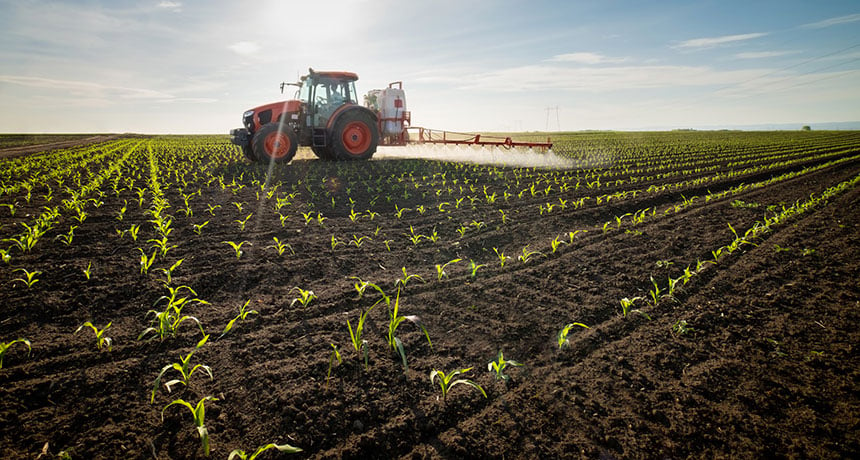
With mounted sprayers, due to the load represented by the full tank combined with the deployed boom arms, tyre pressure has to be increased to compensate for the excess weight.
The limit of the mounted implement therefore lies in a limited boom arm width and a reduced size tank to enable the tyres to bear the overall load.
To balance the load distribution over the four tyres, adding a tank at the front makes it possible to compensate for the pressure on the rear tyres in the same way as front ballasting.
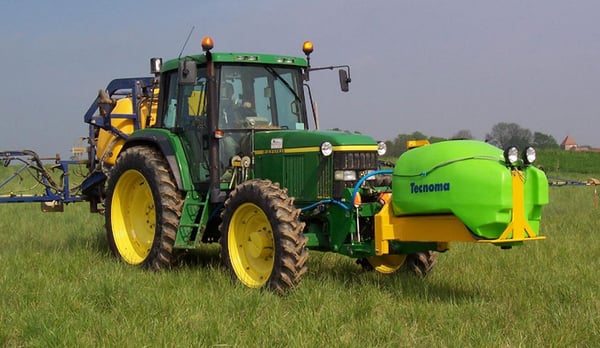 Balancing the load by adding a front tank
Balancing the load by adding a front tank
Use of narrow tyres to preserve seedlings
Opting for tall, narrow tyres makes it possible to bear more weight (larger sized tank, or double tank at the front and at the rear, or longer boom arms) without increasing pressure too much and, as such, to limit excessive crop compaction.
Firestone’s narrow Performer 95 tyre has a special steel belt feature integrated in the tread, which gives it a better load capacity than its competitors. By choosing large dimensions such as:
- 270/95 R44 you can carry up to 4,505 kg per tyre at the reduced speed of 10 km/h in cyclic field operations
- 270/95 R48 up to 4,760 kg per tyre at the same speed.
This makes it possible to work with large sized aluminium boom arms, even with a mounted implement.
2. Particularities and constraints for the agricultural tyres of a trailed sprayer
A trailed sprayer allows you to work with large volume tanks of up to 8,000 litres or more and very large aluminium boom arms which can cover an area of 50 metres.
The major advantage of the extent of the treatment area lies in the time savings in treating a given surface area and in the reduction in the number of trips back and forth across the field.
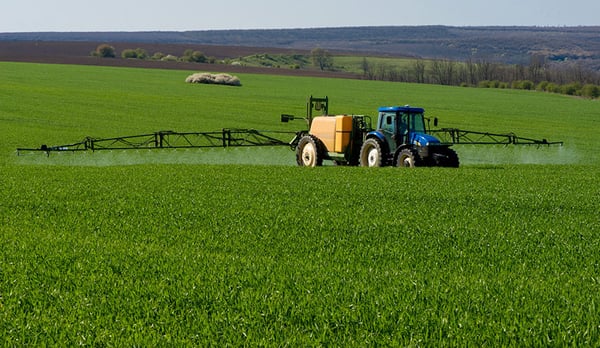
The ideal choice of tyre is still a narrow tyre, again a big, tall tyre for the tractor and implement to be able to fit between the crop rows without causing damage. The spread of the load between the trailed implement and the rear axle makes it possible to increase the load considerably.
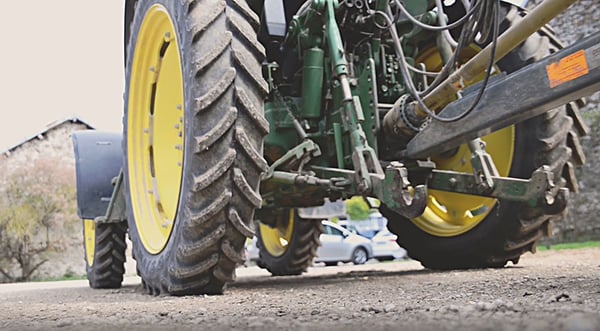 Firestone’s Performer 95, a narrow tyre for a trailed sprayer
Firestone’s Performer 95, a narrow tyre for a trailed sprayer
The Performer 95’s flexible sidewalls combined with the steel chord belt design of the tread give the tyre a very good shock absorption capacity which improves the stability of the arms during spraying operations. Furthermore, these steel chords allow you to reach a maximum load capacity with a trailed implement of more than 5,800 kg per tyre for the largest tyre sizes:
- 340/85 R48 = 5,865 kg at 4.5 bar at 10 Km/h in cyclic field operations and 3,450 kg at 3.6 bar at 65 Km/h on the road
- 300/95 R52 = 5,865 kg at 5 bar at 10 Km/h in the fields and 3,450 kilos at 4 bar at 65 Km/h on the road.
This tyre design is particularly well suited to cyclic sprayer loads, with operations beginning with a full tank (between 4,000 and 8,000 litres depending on the tank) which is emptied progressively during the course of the treatment.
This cyclic load puts an enormous strain on the tyre which must be designed for this particularity.
3. Particularities and constraints for self-propelled sprayer tyres
Use of narrow tyres for a self-propelled sprayer
As self-propelled machines were designed for spraying, they make it possible, with a better ground clearance, to carry out spraying operations through all the crop development stages. Using a very tall tyre means that you can straddle crops easily, even when they are fully developed.
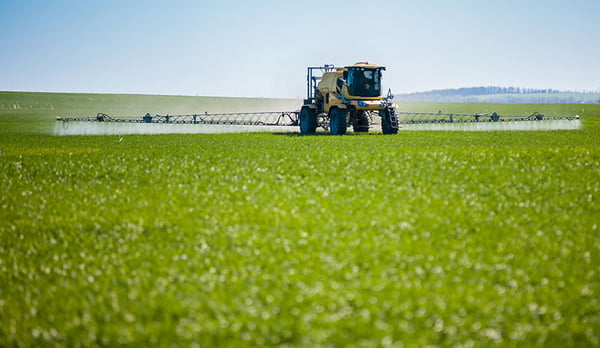 A self-propelled machine designed for spraying makes it possible to treat a larger surface area
A self-propelled machine designed for spraying makes it possible to treat a larger surface area
The central position of the tank leads to a better load distribution over the four wheels of the self-propelled sprayer, as compared to a tank mounted on the rear of the tractor. The impact on the ground will be very different and soil compaction will therefore be reduced. If you use narrow tyres, passing through inter-row cultivation areas is easier.
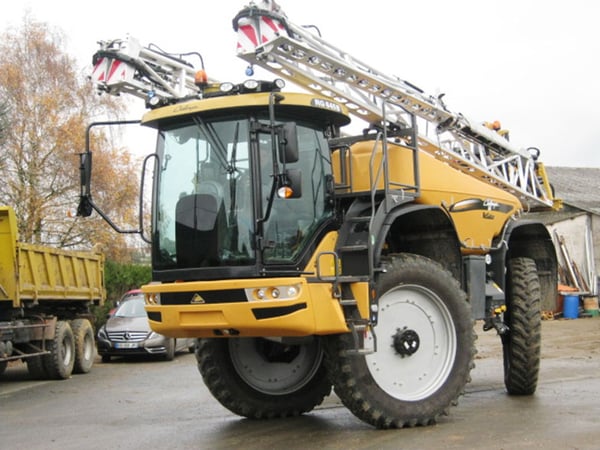 Rogator Challenger self-propelled sprayer equipped with Firestone 380/105 R50 tyres
Rogator Challenger self-propelled sprayer equipped with Firestone 380/105 R50 tyres
Why choose the Performer 95 for your self-propelled sprayer?
In addition to its steel chord belt which stabilises its tread, increases its load capacity and extends its useful life considerably, Firestone’s Performer 95 tyre is made using dual angle lug technology which improves traction a great deal and leads to excellent self-cleaning.
Its uniform design allows you to work at greater speed, while maintaining a heavy load capacity. For example:
- 4,090 kg per tyre at 25 km/h at 4 bar or 3,780 kg at 40 km/h at 4 bar for a 300/95 R52
- 3,735 kg per tyre at 25 km/h at 4 bar or 3,450 kg at 40 km/h at 4 bar for a 300/95 R46
- 3,645 kg per tyre at 25 km/h at 4 bar or 3,370 kg at 40 km/h at 4 bar for a 300/95 R42
For more information on tractor tyres
With Firestone, you have the guarantee of tractor tyres that deliver a real advantage, and that in choosing our brand, you can work worry-free.
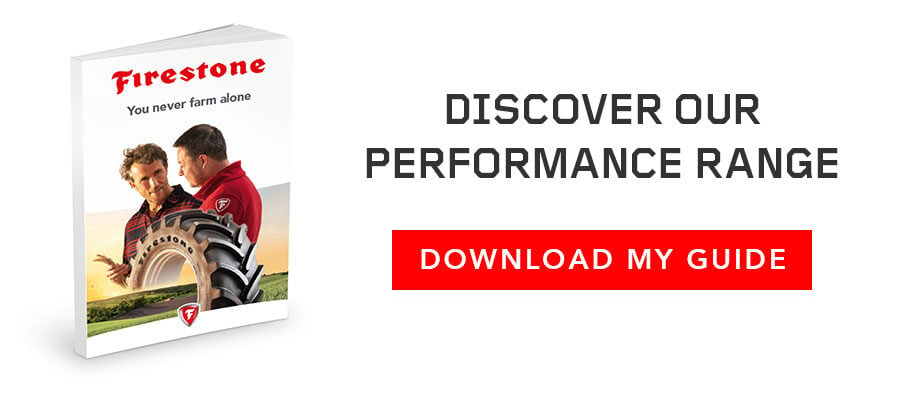
Most people who read this article have also read some of the following articles:
This information is intended only to make you aware of the technical and functional aspects of agricultural tires and their use. It does not allow you to make a judgment or a definitive conclusion on a given problem. Only your agricultural tire expert is able to make a technical assessment and take a final decision, case by case.